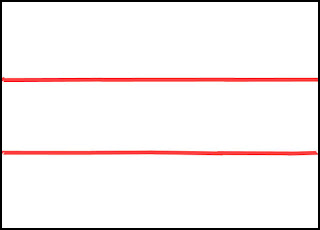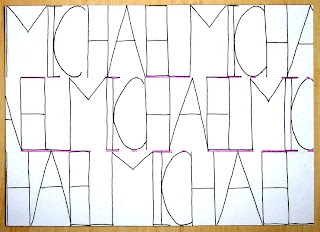
You need:
- white drawing sheet, 15 by 21 cm (A5 size)
- pencil
- ruler
- eraser
- markers
This is a great lesson for the beginning of the school: a name tag in the style of painter Paul Klee. This drawing can also be used for the birthday calendar that each group makes at the beginning of the school year.
Paul Klee
Paul Klee (1879 – 1940) is a German/Swiss painter. His work belongs to the modern art. Klee developed mainly as an autodidact and left more than 9000 artworks. In 1912 he saw the work of Picasso and Malevich, and he met Robert Delaunay, who believed colour is the most important element in a painting. After a trip to Tunisia in 1914 Klee started to paint more colorful and abstract. He painted many subjects : landscapes, portraits, animals, mythology, mysterious machines. In his work he combined abstract and figurative shapes. Klee 's work cannot be described in one single word. Surrealism, cubism, abstraction are terms which are applicable to his paintings. He is classified by expressionism. (Source: Wikipedia)
Lesson
Show some artworks of Paul Klee and discuss them. What do you see? Wat zie je? What does strike you? Show finally the work 'Blue Night' and discuss this. Is this like the other works you 've seen? Do you recognize the painting style? What colours are used in Blue Night? How do we call those colours?
Students have to make a drawing in Paul Klee style. Divide the sheets of paper. The sheet must be up with the short side. Using a gray pencil and ruler students divide the sheet into three strips of 5 to 21 cm.

Starting top left, write the first letter of your name in capital. The letter must be 5 cm high and touch the first line and the side and top of the sheet. Write the second letter. Be sure the second letter hits the first one, as well as the writing line and the top of the sheet. Do the same with the rest of the letters of your name. If you're ready with your name, start over again.
.jpg)
Writing lines are pink in this example. Click to enlarge.
Proceed on the second line and make sure the letters touch the top of the first line. The third line goes the same way, but the letters should touch the bottom of the sheet and the letters on the second line. See example above.
Use an eraser to remove the writing lines. Beware: the letters must stay! So: with an E the bottom line is part of the letter, and should therefore not be erased.
.jpg)
The writing lines are erased. Click to enlarge.
Choose four colours markers. Colour the white spots who are completely surrounded by lines. This might be small spots from the letters, but they could be tall as well because of open letters. Make sure won't get twice the same color side by side. You can prevent this by colouring from top to bottom or from left to right. Choose cool colours just like Klee, or let the kids choose themselves. Just four colours!
.jpg)
Four colours. Example is made with Paintshop. Click to enlarge.
When it is finished, outline with a thick marker. In this example is chosen for silver, because it fits well with the cold colours of the work. To make a birthday calendar for the class, the work has to be pasted on a calendar sheet. This can be drawn, but can also be made on the computer as shown below.
.jpg)

.jpg)
.jpg)
.jpg)
.jpg)
.jpg)
.jpg)


.jpg)
.jpg)
.jpg)
.jpg)
.jpg)
.jpg)
.jpg)
.jpg)

.jpg)

+(2).jpg)
+(2).jpg)

